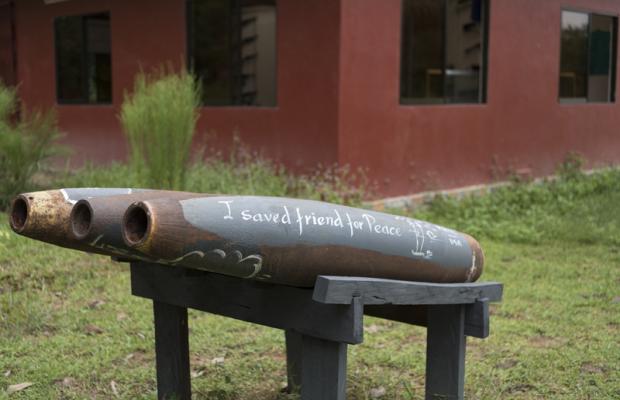
- Travel Name: Cambodia War Remnant Museum
- Travel Destination: Siem Reap
Mission of Cambodia War Remnant Museum
The War Remnant Museum is more than a museum. It is also a center that provides education/training and support for dozens of at-risk people and landmine survivors, many whom are part of families suffering overwhelming hardships. The War Remnant Museum was created so that it might serve as a place of healing for bodies, hearts and minds and an important role in the development of society. We believe that love, support, education and teaching new skills will help secure better opportunities in life.
CAMBODIAN HISTORY
Before the Civil War
Our intention is to provide a general overview of Cambodia’s history, from the earliest known records up until modern time. This is by no means a complete or scholarly report; it’s simply a summary of major points. Since the focus of our museum is the sad civil war that has done – and continues to do – damage to our people, that section will be the most extensively developed.
History of Cambodia War Remnant Museum
Decades of War in Cambodia
The years 1965 – 1991 were a time of horrible war and destruction in Cambodia. The strife was both internal and external, marked by civil war, being an innocent bystander in the Vietnam War, genocide and famine, and international war with Vietnam.
Civil War
Cambodia remained neutral through the early 1960’s but slowed became more open to the People’s Republic of China, as Prince Sihanouk expected their victory and future dominance in Southeast Asia. This met with resistance from conservatives, who were represented by Minister of Defense Lon Nol.
Cambodian General, Prime Minister Lon Nol
At the same time, North Vietnamese forces began to encamp on the Cambodian side of the border, to provide a logistical advantage against the South Vietnamese and US. The latter forces began bombing raids beginning in 1969, which killed between 40,000 and 150,000 Cambodians.
With both internal economic struggles and external political problems, Cambodia was torn. Lon Nol led a National Assembly vote which unanimously ousted Sihanouk while he was abroad. Vietnamese were scapegoated, sometimes hunted by neighbors and soldiers. Official efforts were to round them up in detention camps.
Lon Nol attempted to also remain neutral; however the North Vietnamese saw the coup as an opportunity, and persuaded Sihanouk to ally himself to the Khmer Rouge, the communist Cambodian movement, which gave the movement greater credibility and helped them to recruit. The North Vietnamese, in early 1970, pressed attacks into northeastern Cambodia, and the US and South Vietnamese sought to attack them, only to discover that the North Vietnamese had moved even further into Cambodia.
Determined peasants made up the bulk of the Khmer Rouge, and from 1970 to 1975, gradually transformed from auxiliaries to the North Vietnamese forces, to being its own complete entity. The North Vietnamese government continued support throughout.
On June 4, 1972, Lon Nol was elected President in rigged elections; democracy had not truly been achieved. The 1973 Paris Peace Accords brought hope, US bombings were stopped, and Lon Nol declared a unilateral ceasefire. But the Khmer Rouge continued fighting, which reached the edges of Phnom Penh.

Copyright © 2025, Cambo Tours & Travel - Discover Authentic Travel Experience, All Rights Reserved.